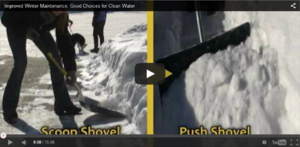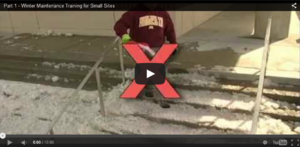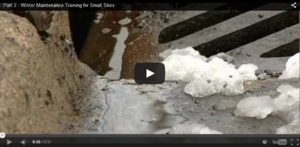
Educational resources for Smart Salting (S2)
Salt that is applied to our roads, parking lots, and sidewalks ends up in our lakes, streams, and wetlands, negatively impacting those water resources. Salt has other negative impacts, such as harming vegetation, including turf, and altering the process of infiltration into soil.
This page provides information on education resources for salt management. Included are links to fact sheets, websites, and videos.
Residents

Link to training video that offers easy tips about tools, techniques, and products that you can use to keep your driveways and sidewalks safe while protecting our waters.
- 9 Mile Creek Watershed district fact sheet - this fact sheet offers some background information on effects of salt and a 4-step process for managing ice in residential settings
- MPCA Salt Pollutes postcard - offers tips on ways to reduce salt use. Print and distribute to residents and local businesses.
- Links to related material
- Snow and Ice Control Material Application (CTAP) - This Circuit Training and Assistance program (CTAP) workshop helps determine the correct chemical and proper application rates based on the weather and pavement temperature for using salt and sand most effectively.
- Clear Roads Winter Maintenance Newsletter - Clear Roads produces a quarterly newsletter that captures the latest research and news on winter maintenance technology and practices within the U.S. and around the world. Each E-newsletter compiles links to recent reports, guidance documents, news articles, and research updates from state DOTs, universities, the Transportation Research Board and the Federal Highway Administration.
Building entrances and sidewalks

Part 1 of this video introduces best practices for winter maintenance of small spaces such as sidewalks, entryways, and steps. Guidance includes deicer material selection and application rates.

Part 2 of this video introduces best practices for winter maintenance of small spaces such as sidewalks, entryways, and steps. Guidance includes deicer material selection and application rates.